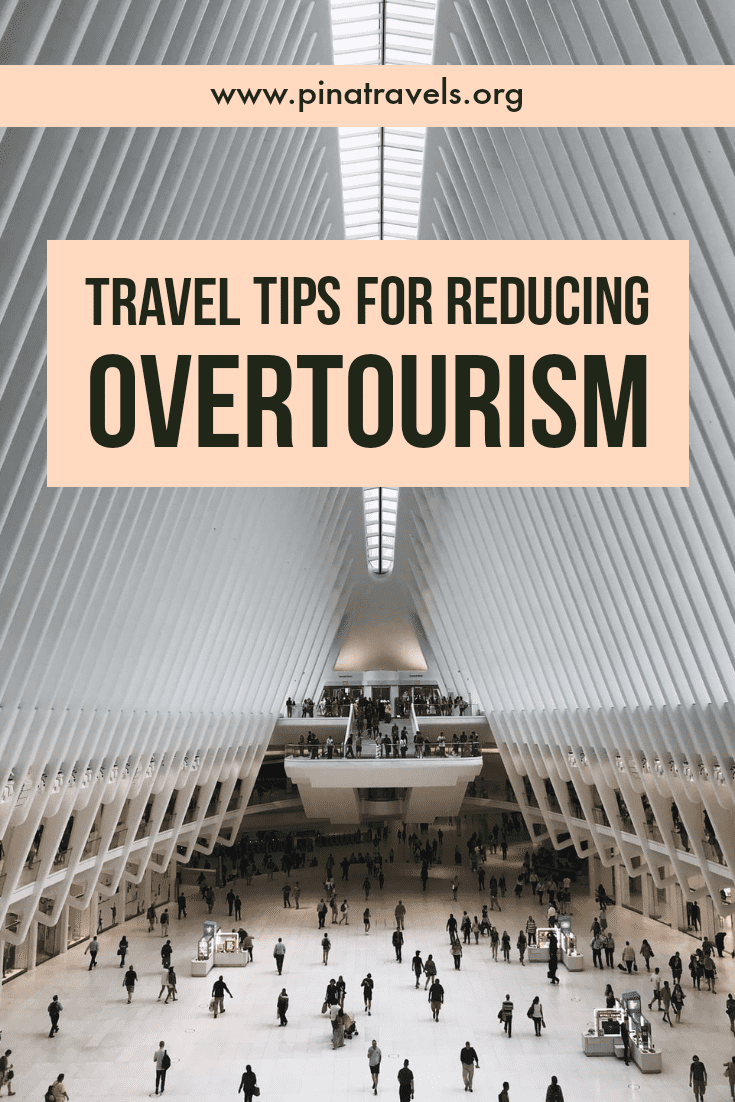

The guilt of overtourism is a growing concern for those visiting fragile destinations. With increasing global travel, the impacts of mass tourism on delicate ecosystems and local communities are becoming increasingly apparent. Understanding the environmental, social, and economic consequences of overtourism is crucial. This article explores this very crucial issue, providing insights and actionable steps to mitigate its effects. We’ll examine the causes, effects, and solutions to this growing problem, and provide clear frameworks for making more responsible travel choices. The structure of this article will be to first understand the problem, then explore solutions, and finish by offering tips to travelers and the role of policymakers in the effort.
Understanding the Problem: Overburdened Destinations
The Unseen Costs of Mass Tourism
Overtourism, the phenomenon of excessive tourism in a destination, is a complex issue with far-reaching consequences. It is more than just crowded streets and long lines. The negative impact spans environmental degradation, economic disparities, and a decline in the quality of life for local communities. The strain on infrastructure, the loss of local businesses, and the negative environmental impact on fragile ecosystems should not be overlooked. A focus on the guilt is important for responsible travel and preservation.
The Environmental Toll
Fragile destinations often harbor unique ecosystems and biodiversity. The sheer number of visitors can lead to significant environmental damage. Overcrowding can disrupt delicate ecosystems, erode natural landscapes, and pollute water sources. For example, increased waste and pollution levels often accompany rising tourist numbers, and the impacts on fragile ecosystems are quite visible.
Economic Disparity and Community Discontent
While tourism can provide economic benefits, mass tourism often leads to economic disparities. Overtourism can drive up prices, potentially pushing local businesses and residents out of the market. This can result in local vendors being displaced, affecting the local community’s ability to maintain a sustainable way of life. Additionally, many times, tourists are ignorant of the consequences of their actions and lack an understanding of the local culture and traditions.
Sustainable Tourism Practices for Responsible Travel
Planning Your Trip Consciously
Informed travel begins with careful planning. Researching the destination, understanding its fragility, and choosing the right time to visit are vital. Choosing sustainable accommodations and restaurants that support local communities is key in reducing your guilt. Avoiding overcrowding is also important in reducing your environmental impact. Choosing to visit less popular destinations, or less popular times of year, could help mitigate this.
Minimizing Your Environmental Impact
Eco-friendly practices can significantly lessen your footprint. Reducing waste, conserving water and energy, and minimizing your carbon footprint are key. Opting for eco-friendly transportation and choosing to walk or cycle whenever possible is another great way to reduce environmental impact. Supporting businesses that prioritize sustainability demonstrates your commitment.
Supporting Local Communities
Prioritize local businesses and markets. Purchasing locally-sourced products, dining at local restaurants, and engaging with local tour operators directly benefits the community and directly reduces the guilt of tourism.
Government Regulation and Policy
Implementing Visitor Quotas
Limiting the number of visitors can significantly ease the pressure on fragile destinations. Establishing quotas can protect ecosystems and ensure that the destination remains a desirable place for both tourists and residents. This strategy is not only beneficial to protect the environment but also to support local businesses and communities by preserving their way of life.
Encouraging Sustainable Tourism Practices
Promoting sustainability can encourage businesses to adopt environmentally responsible practices. Regulations on waste management, emissions, and energy consumption can incentivize sustainability. Supporting education programs for travelers will directly help lessen guilt when travelers make more conscious decisions.
Investing in Infrastructure
Investment in infrastructure and transportation to help manage tourist flows plays a large role in easing the burden on local businesses and residents. Creating additional access points that disperse tourists could also help in mitigating the impacts of overtourism.
Case Studies and Examples
The Impact on Galapagos Islands
The Galapagos Islands, a prime example of a fragile destination, has experienced significant overtourism. The increased visitor numbers have led to environmental damage and disruptions to the delicate ecosystems. The sheer number of tourists put a huge strain on resources, increasing pollution levels and affecting the well-being of the local ecosystem.
The Success of Iceland
Iceland provides a contrasting model. The country has implemented visitor quotas to manage the flow of tourists, preserving the environment for generations to come. Implementing regulations and encouraging responsible travel choices has led to a shift in how tourism is managed and has helped preserve its unique culture and environment.
The Role of Tourists
Shifting Travel Choices
Travelers can play a crucial role by actively choosing to be part of sustainable tourism practices. Opting for less visited destinations or travel dates that are less crowded could help mitigate the impacts of overtourism on a specific destination. Choosing accommodations and vendors who actively practice sustainable tourism will support this movement.
Educating Yourself
Educate yourself about the destination before traveling. Understand the unique characteristics of the ecosystem, the cultural norms, and the environmental implications of your choices. Researching how the destination is affected by tourism will give travelers a better understanding of their own impact.
Supporting Initiatives
Seek out and support organizations and initiatives dedicated to sustainable tourism. Your choices make a difference and help ensure that fragile destinations are protected for future generations. Supporting companies that actively practice sustainable methods is a great first step.
The Future of Travel
Embracing Sustainable Tourism
Sustainable tourism is not just a trend; it’s a necessity. By understanding the guilt of overtourism, travelers can shift their travel habits toward more responsible practices. A commitment to protecting the environment and local communities is vital for a lasting and positive legacy.
The Power of Collective Action
By working together, tourists, governments, and local communities can create a future where travel is sustainable and respectful of fragile destinations. Promoting initiatives and encouraging responsible travel choices will lead to lasting improvements for the environment and local communities.
Encouraging Responsible Practices
A change in perspective will positively influence travel choices, shifting focus from mass tourism to responsible, sustainable tourism.
Conclusion: Mitigating the Guilt
The guilt of overtourism highlights the urgent need to create a more sustainable approach to tourism in fragile destinations. By understanding the detrimental effects of unchecked tourism, tourists can actively choose responsible options and lessen their impact. This includes considering travel dates, choosing eco-friendly accommodations, and directly supporting local communities. Moreover, policymakers should implement stricter regulations, investing in sustainable infrastructure and promoting initiatives that prioritize the well-being of local communities and the environment. By understanding these issues, travelers, governments, and local communities can create a sustainable future together.
Case Studies and Examples
The Case of Machu Picchu
The increasing number of tourists visiting Machu Picchu has caused environmental and social issues, including erosion, waste, and increased cost of living. The sheer volume of people can overwhelm the fragile ecosystem and the local community’s ability to accommodate large numbers of visitors.
Responsible Tourism in Costa Rica
Costa Rica offers a model for responsible tourism. Its approach focuses on protecting natural habitats and involving local communities in tourism initiatives. This approach creates a sustainable and reciprocal relationship that promotes shared benefits.
The Responsibility of Travel Agencies
Promoting Responsible Travel Packages
Travel agencies have a crucial role to play in promoting responsible tourism. They can design and market travel packages that prioritize sustainability and minimize the environmental impact of their clients. Highlighting sustainable activities, accommodations, and transportation options will be pivotal in guiding tourists towards responsible choices.
Educating Travelers
Travel agencies can educate travelers about the importance of responsible tourism practices. By sharing information about the local culture, environment, and communities before and after their trips, these agencies encourage sustainable and conscious travel choices.
Collaborating with Local Communities
By working with local communities, travel agencies can support their economic well-being and ensure that tourism benefits the local economy and culture in a sustainable way. This includes ensuring fair compensation and support for local businesses directly impacted by tourism. This practice directly reduces the guilt of tourists and supports long term prosperity for the local community.
Frequently Asked Questions
What are some specific examples of overtourism’s negative impacts?
Overtourism often leads to increased strain on local infrastructure, like roads and water systems, leading to poor quality of life for residents. It also puts a tremendous strain on local businesses, displacing local vendors, and driving up prices. Environmental damage from excessive foot traffic and pollution is another concerning consequence. For example, the overcrowding of historical sites can erode structures and damage ecosystems. These are just some of the significant effects. By understanding these impacts, tourists can make more responsible choices.
How can I travel more sustainably and avoid contributing to the guilt of overtourism?
Prioritizing responsible tourism involves conscious choices before, during, and after your trip. Research the destination thoroughly to understand the local impact of tourism and support businesses that prioritize sustainability. Choose off-season travel dates and opt for accommodations that promote environmental awareness. Carry out sustainable practices, such as minimizing waste and conserving water and energy. Support local communities by patronizing local restaurants, markets, and tour operators. Responsible travel choices show you value the environment and the local culture.
What role can governments play in managing overtourism?
Governments have a critical role to play in managing overtourism. They can implement strategies that regulate the number of tourists visiting a destination. This can involve establishing visitor quotas, implementing seasonal restrictions, and developing strategies to disperse visitor traffic. Furthermore, investment in infrastructure, such as transportation and accommodation, to manage tourist flow is crucial. Governments also play an important role in promoting sustainable tourism practices and education to travelers.
In conclusion, the guilt of contributing to overtourism at fragile destinations is a serious issue requiring collective action. By understanding the impact of our choices, promoting responsible tourism practices, and advocating for sustainable policies, we can mitigate the negative consequences and ensure the preservation of these precious places for future generations. The next step is to actively engage in informed travel decisions and support organizations dedicated to sustainable tourism initiatives. Learn more about how you can make a positive difference.